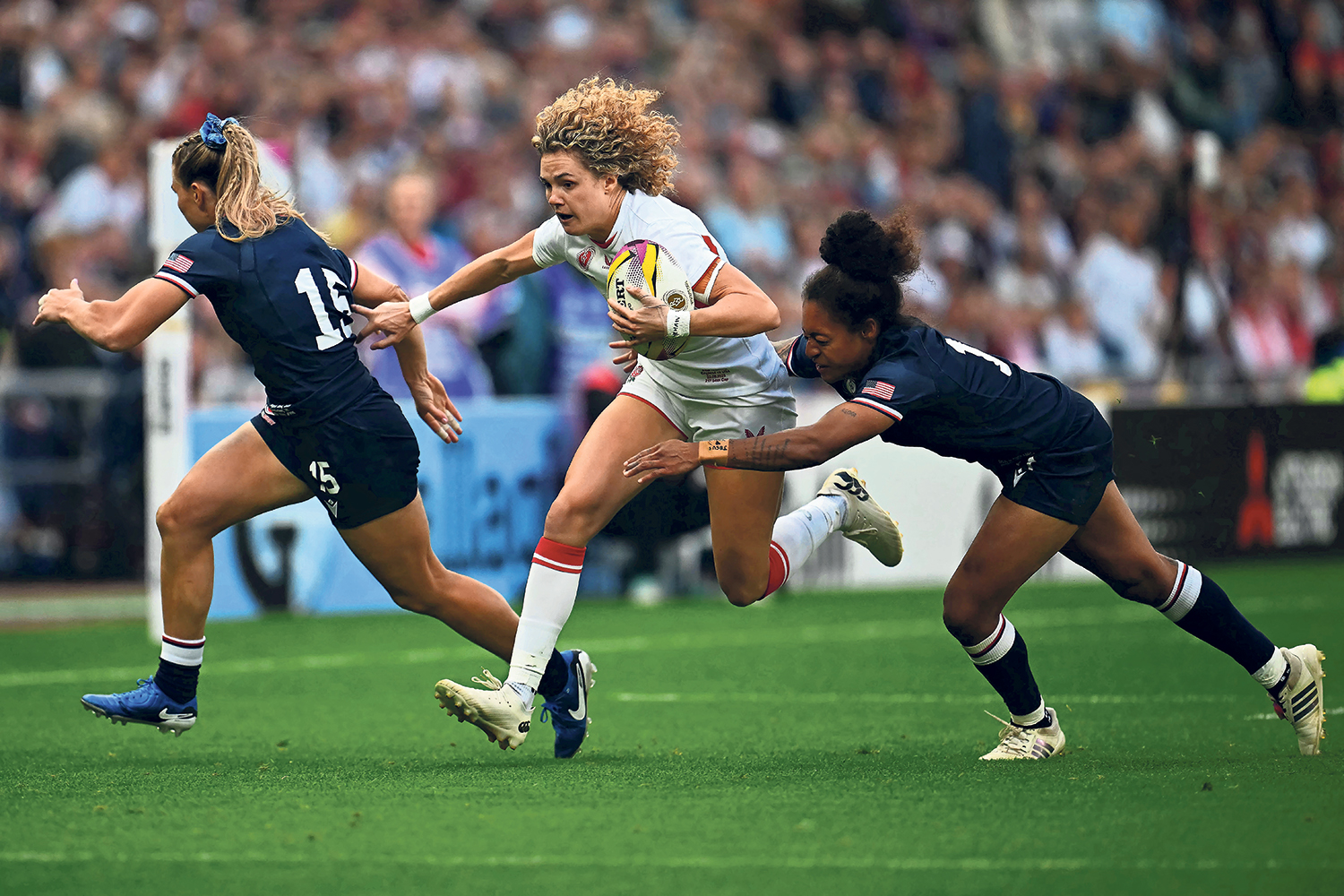“I like that Costa Coffee,” said Caroline, a USA fan, when asked if she had enjoyed her visit to Sunderland. But it turns out she thought we were in Newcastle and the difference didn’t feel worth explaining, if Costa had been the highlight anyway. The Eagles had landed, and the fan zone was full of USA fans brandishing flags and talking excitedly about the match.
As popstar Anne-Marie came out in a sequined red rugby shirt before the match had kicked off, surrounded by dancers and pyrotechnics, the 42,723 rugby fans in the Stadium of Light built an atmosphere unlike any home England match before it. It was a record crowd for a women’s Rugby World Cup match, and we are only just beginning. It’s a record that will be broken again over the next month.
A pre-match show felt new, as did the finally-functioning Mexican wave – a long victim of sparse crowds at women’s rugby events. Vuvuzelas are another novel – although not wholly welcome, – addition to England women’s rugby crowds. It’s one we might thank the swathes of fans who arrived in Lionesses shirts for.
Two uncharacteristic errors from England with their first two touches of the ball showed just how much the pressure had built in the build-up to this tournament. And what followed was, by the Red Roses’s standards, a stuttering first-half performance, even heading into the break with a 28-7 lead.
There was a cruel irony in England losing their first lineout of the Rugby World Cup. Rewind three years and England’s World Cup dreams fell after Abbie Ward, arguably the finest lineout technician in the women’s game, lost the ball in a win-or-lose battle in the dying moments of the final.
That the Red Roses’s set-piece machine stalled on ignition in this World Cup with another dropped ball in a lineout, by Ward, seemed miserable. The Red Roses quickly regathered, scoring a try from a driving maul from a lineout moments later.
At the last World Cup, England were criticised for being too reliant on their driving maul – a weapon called the ‘tank’ by former England head coach Simon Middleton. That they scored their first try in that fashion, rather than the more exciting brand of rugby we have watched over the last year, didn’t seem to dampen the cheers of even one of the fans here.
In the end, this was a characteristically convincing win by the Red Roses. As nerves settled, England’s backs dazzled. A brace of tries from Ellie Kildunne, player of the match, were welcomed, as were the two she gifted to winger Jess Breach with last-second passes. There was a moment of sheer brilliance when Kildunne, a former football player, keepy-uppied the ball on her thigh, while running, and regathered it in time to pass the ball to Breach who put her name on the scoreboard again. The forwards controlled the midfield well, powering through a committed American defence, with front-row Lark Atkin-Davies also securing two tries to her name.
But if there was one chink in the armour of England’s tank it was the back-three defence, which was exposed by the USA forward Tahlia Brody, who zipped away from Breach in the first half for the USA’s only try of the match. There were stoppages aplenty too, a result mostly of poor ball handling, which the DJ filled with pop classics as the stadium announcer asked the crowd to sing along. There were points when the match felt more like a party than a World Cup opener, but nobody minds when the joy of the event feels like a novelty.
As the final whistle blew on a 69–7 victory, the roar from the record-breaking crowd said it all: women’s rugby has never felt bigger, bolder, or more alive. This was a statement. And it’s only just beginning.
Photograph by Paul Ellis/AFP via Getty Images

